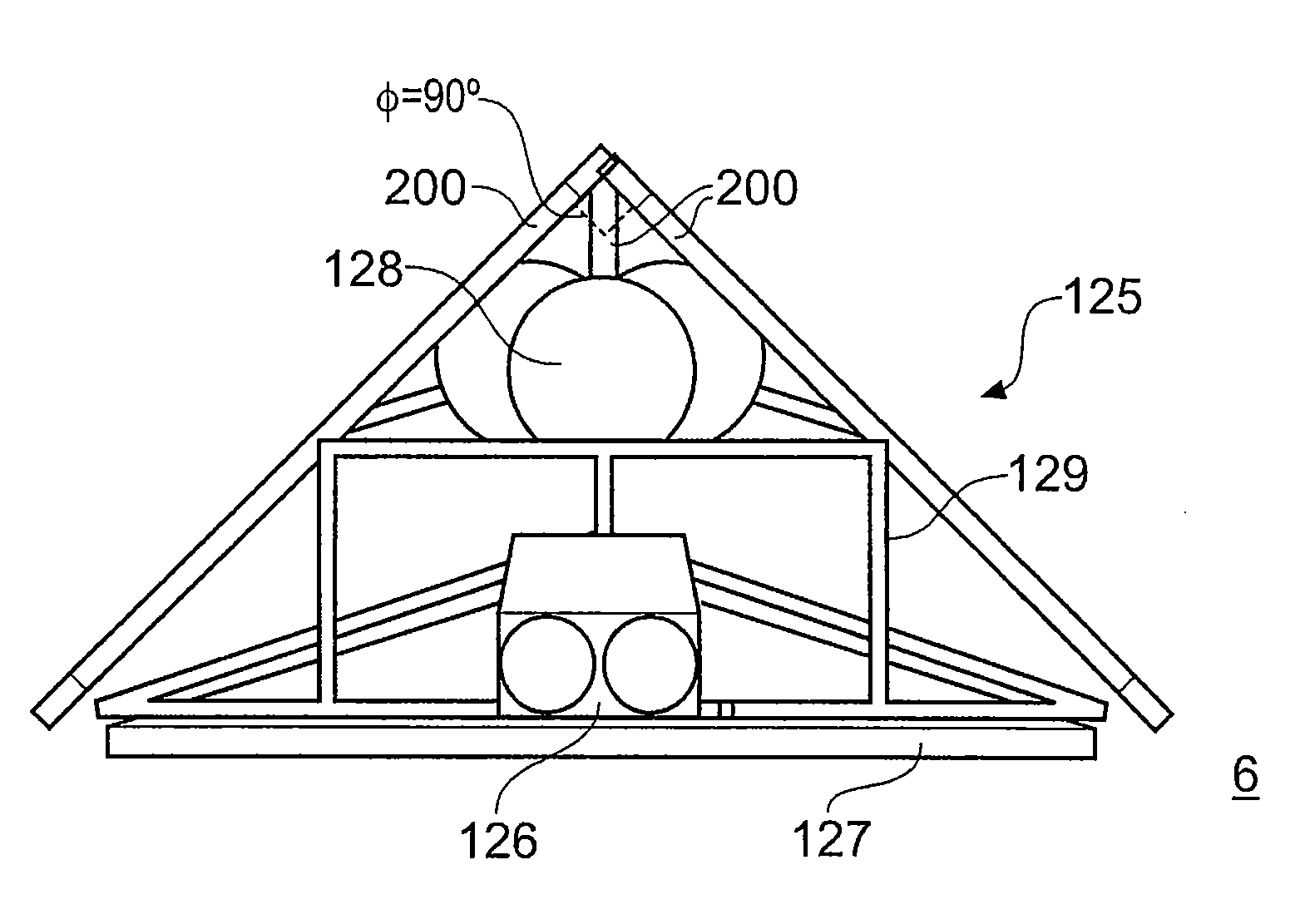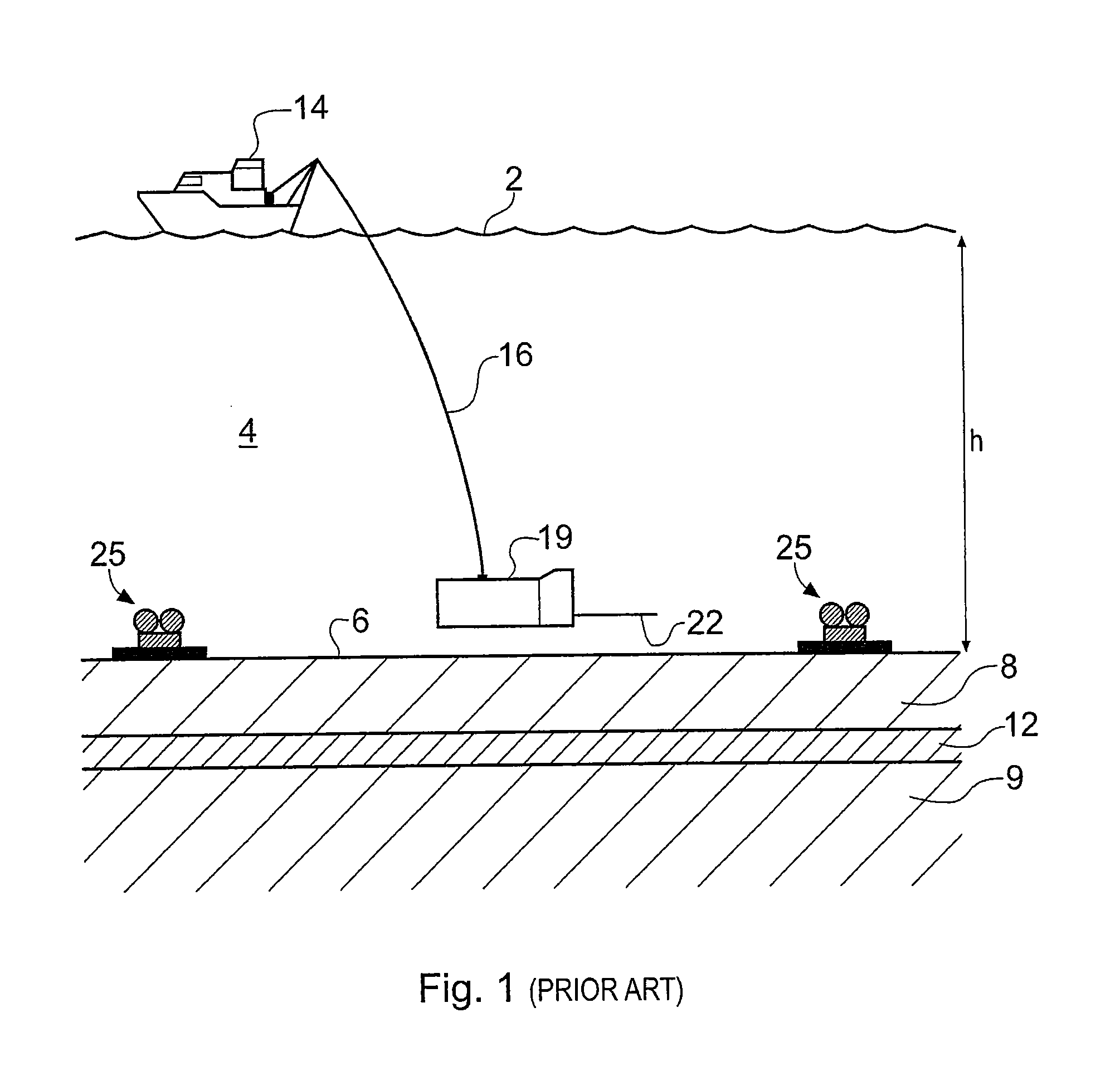Electromagnetic detector for marine surveying
a technology of electromagnetic detectors and electromagnetic detectors, applied in the field of seafloor electromagnetic detectors, can solve the problems of time-consuming deployment, difficult to accurately determine the orientation of the dipole antennae comprising the detector on the seafloor, and the conventional detectors for em surveying suffer from a number of problems, so as to improve the accuracy of measurement statistics
- Summary
- Abstract
- Description
- Claims
- Application Information
AI Technical Summary
Benefits of technology
Problems solved by technology
Method used
Image
Examples
Embodiment Construction
[0060]FIG. 4 schematically shows a surface vessel 14 undertaking controlled source electromagnetic (CSEM) surveying of a subterranean strata configuration using EM detectors 125 according to an embodiment of the invention. Features of FIG. 4 which are similar to and will be understood from corresponding features of FIG. 1 are indicated by the same reference number. Thus the surface vessel 14 floats on the surface 2 of a body of seawater 4 of depth h metres. A submersible vehicle 19 carrying a source in the form of an HED transmitter 22 is attached to the surface vessel 14 by an umbilical cable 16 providing an electrical and mechanical connection between the submersible vehicle 19 and the surface vessel 14. The HED transmitter is supplied with a drive current so that it broadcasts an HED EM signal into the seawater 4. The HED transmitter is typically around 50 metres above the seafloor 6. The surface vessel 14, submarine 19, umbilical 16 and HED transmitter 22 may be conventional.
[00...
PUM
 Login to View More
Login to View More Abstract
Description
Claims
Application Information
 Login to View More
Login to View More - R&D
- Intellectual Property
- Life Sciences
- Materials
- Tech Scout
- Unparalleled Data Quality
- Higher Quality Content
- 60% Fewer Hallucinations
Browse by: Latest US Patents, China's latest patents, Technical Efficacy Thesaurus, Application Domain, Technology Topic, Popular Technical Reports.
© 2025 PatSnap. All rights reserved.Legal|Privacy policy|Modern Slavery Act Transparency Statement|Sitemap|About US| Contact US: help@patsnap.com



